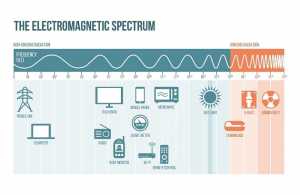As the race to 5G continues for network operators, installation, verification, optimization, and troubleshooting in the field become a reality. The transition from 4G to 5G requires the integration of new technologies, like phased array antennas, massive MIMO, and beamforming, into the existing network infrastructure. This blog introduces four 5G field tests that operators should perform to verify network performance during 5G deployment.
Path loss characterization
Because 5G involves shorter, higher-frequency, millimeter-wave (mmWave) signals, it’s more susceptible to degradation during transmission than 4G signals. That means 5G signals are more likely to lose power density as they propagate through space due to several environmental factors like rain, trees, buildings, air quality, and more. This loss in power density is known as path loss.
Telecommunications companies must be able to accurately anticipate how mobile users will be affected by path loss in their system. To do this, operators create a link budget that sums all the gains and losses between a transmitter and receiver. This budget is also known as a link budget. To establish a link budget for successful 5G implementation, operators need test equipment that can characterize path loss.
Base station coverage testing
4G base station coverage testing involves scanning receivers with omnidirectional antennas that detect coverage gaps. The receivers log one data point per geolocation and make several measurements in the same location for better statistical results. 5G base station testing, on the other hand, is a little different.
5G base stations and mobile phones use phased array antenna technology for massive MIMO and beamforming. Therefore, 5G base station testing requires a spectrum analyzer or a scanning receiver equipped with a phased array antenna, like that pictured in Figure 1. Also, because of the characteristics of 5G mmWave beams, logging one geolocation point is not enough. Field engineers must collect signal power data across azimuth and elevation in addition to geolocation to fully verify base station coverage.

Over-the-air (OTA) control channel interference testing
5G brings several technological advancements to life, and it also brings interference. 5G will operate on some of the same satellite frequency bands used by emergency services. This overlap presents a potential interference problem that can be detrimental.
Additionally, adjacent cell towers can cause interference between each other. If interference occurs in the control channel, it can bring the whole cell tower down. So, it is necessary to have a solution in the field kit that detects intermittent interference signals and visualizes control channels.
Traditional spectrum analyzers may miss information during deadtime while stitching gathered data blocks together. The best method for interference hunting and visualization is real-time spectrum analysis or RTSA. So, a solution that performs RTSA measurements, like that shown in Figure 2, is ideal for interference management.

EMF exposure evaluation
Many countries have strict regulations on the amount of electromagnetic field (EMF) radiation that a transmitter can emit. These regulations ensure a safe environment for the public and workers because high EMF radiation is linked to serious health issues like cancer. Figure 3 shows well-known sources of EMF radiation and their corresponding frequency bands.

5G mmWave signals have different electromagnetic field (EMF) properties than previous standards. And because mmWave signals degrade over distance, more antennas have to go up to support 5G. This increase and change in EMF exposure require network operators to verify EMF levels in the field for safety and compliance. To measure EMF levels, field engineers need a spectrum analyzer that tests total field strength across frequency bands of interest. Solutions that have pass/fail limits integrated into the measurement make EMF readings even easier.
5G is the next technology revolution, but there are several challenges associated with its successful deployment in the field. If you’re looking to make the leap to 5G, make sure you’re familiar with these field tests and make sure you have the proper test equipment so that your transition is as smooth as possible.








